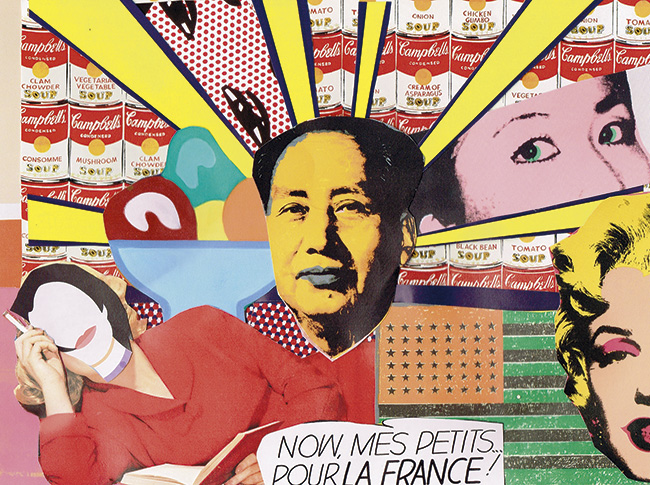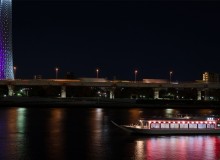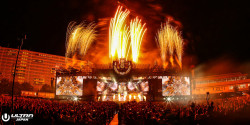
Originally published on metropolis.co.jp on September 2013

Every now and then, we art reviewers run into an exhibition that refuses to supply artwork to accompany the review. Instead of appreciating the free advertising they are getting, they expect fees for every image used. Surprisingly, “American Pop Art: From the John and Kimiko Powers Collection” at the National Art Center Tokyo is one of these. To get round this, I have cut up the exhibition catalogue to create a collage from pieces of some of the works from the exhibition—in the process creating an entirely new work of art.
I’m not denying the right of famous artists—no matter how rich they or their next of kin may be—to profit from their creativity, but there is an element of irony in the estates of famous pop artists doing this, since most of the better-known ones made their names by recycling earlier imagery anyway. For example, one wonders how much Andy Warhol paid to the Campbell’s Soup company, one of many brands that he used as the basis of his artwork.
Anyway, on with the show! One of the first things that strikes you about this exhibition is the fact that most of the artists are no longer with us. Pop Art, it seems, is now a piece of receding art history, like the Baroque or Northern Renaissance. This is a problem, because, unlike those earlier movements, one of the main points of Pop Art was not so much what it produced, but what it did. Namely, it shook things up and questioned conventional values and notions of art—the visual equivalent of punk rock or hip hop.
The energy and iconoclastic excitement that it created in places like New York and London in the 1950s and 60s, by ignoring the boundaries between high and low culture, had to be enjoyed in the heat of moment. Much of what is on display here, however, has since grown cold. With limited aesthetic merit to fall back on, works seem dull, turgid and uninteresting.
This is especially true for the first few rooms of the show, filled with the grainy, smeared collages of Robert Rauschenburg and the stale, ironic graphics of Jasper Johns. Things pick up a little later when we encounter some of the humor associated with Pop Art, such as Claes Oldenburg’s soft sculptures, including Soft Baseball Bat (1967), literally a baseball bat with an end like a long cushion that the artist reportedly played in a piece of performance art, which must have been hilarious to watch and is still quite funny to imagine.
The aesthetic highlight of the exhibition has to be the section focusing on Andy Warhol’s works. These also include some striking prints and hand-painted prints, some featuring the collector’s wife, Kimiko Powers, dressed in a kimono and looking just a tad like the dragon lady cliché. Cliché, of course, is the essence of Warhol’s work as we see in his iconic color prints of Marilyn Monroe. It’s easy to sneer and look down at an artist who simply reproduced variously colored images plucked from the media mainstream, but on the scale and vividness with which Warhol does it, you can’t help but be impressed.
National Art Center Tokyo, until October 21.







